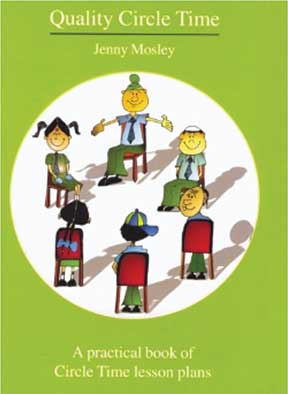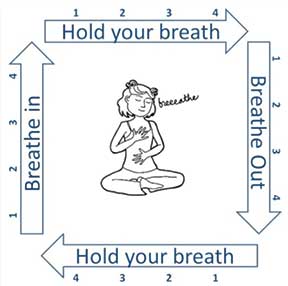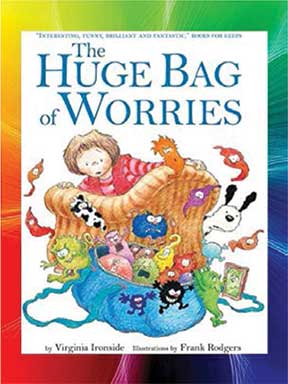Lamia Bagasrawala
Formal education systems are often geared towards specific learning outcomes. Teachers and students are continuously engaged in fulfilling certain requirements to progress from one class to the next. Over the years, education systems worldwide have recognized the role of holistic development and have taken many steps forward in creating schools that offer much more than just academic inputs. In an attempt to provide holistic education, in India, almost all educational boards allow for spaces for social and emotional development through programs like the Adolescent Education Program, value education or life-skills classes. Schools have also taken keen interest in ensuring that sports and other skill-building classes are included in the schedule. All of this however occurs as a parallel curriculum alongside the primary syllabus or curriculum. Sports rarely finds its way into the English class and emotional vocabulary is seldom part of the math class. The lack of integration of these skills and activities into mainstream learning allow for these to be viewed as extra-curricular and additional inputs that are secondary to development and learning.
 Such a distinction between formal subject-oriented education and “learning” results in viewing students as mere agents of information processing. The role of the self as an active agent that is influenced by and influences the learning environment is not taken into account. The student is constantly under scrutiny, either academically or behaviourally, which can lead to fears and worries. Even when not engaging in subject-related curriculum, there are set standards and “norms” that the system has developed and children are expected to strive to meet these benchmarks. Deviation from these norms is identified, labelled and often “disciplined”. These norms, expectations and standards, rarely take into consideration developmental and psychological challenges. Despite the socio-emotional classes, exams and behavioural conduct are viewed as the only acceptable measures of a child’s growth and development. The learner, the child and person that exists behind the mask of a student, is often lost and forgotten in this journey of education.
Such a distinction between formal subject-oriented education and “learning” results in viewing students as mere agents of information processing. The role of the self as an active agent that is influenced by and influences the learning environment is not taken into account. The student is constantly under scrutiny, either academically or behaviourally, which can lead to fears and worries. Even when not engaging in subject-related curriculum, there are set standards and “norms” that the system has developed and children are expected to strive to meet these benchmarks. Deviation from these norms is identified, labelled and often “disciplined”. These norms, expectations and standards, rarely take into consideration developmental and psychological challenges. Despite the socio-emotional classes, exams and behavioural conduct are viewed as the only acceptable measures of a child’s growth and development. The learner, the child and person that exists behind the mask of a student, is often lost and forgotten in this journey of education.
Students’ learning however is not independent of their emotional wellbeing. It is important to recognize that students across classes and grade levels experience a wide range of emotional and psycho-social difficulties. The relationship between students’ learning and their emotional wellbeing is a two-way street. While students’ challenging experiences have an impact on their learning, their learning and educational experiences also influence their wellbeing. Some of these challenges can be developmental, while some are anxieties and worries that stem from certain situations and experiences within the system.
Moving away from conventional indicators
While we attempt to be inclusive and to create spaces for holistic learning, our current systems are still driven by certain conventional outcome indicators. The education system is still guided by the purpose of completing a given syllabus or curriculum and ensuring that students learn what is expected of them at a given level. And this expected outcome is measured through academic examination or test-based performance. While many schools, given the flexibility of certain educational boards, have changed the nature of assessments from examinations to projects and other innovative and higher order skill-based activities, it doesn’t take away from the focus of being marked and receiving a certain grade or score. Such a clear outcome based system, has little scope for integration of psychological and emotional factors that influence and impact the process of learning.
For instance, a large number of students experience exam-related anxiety. It is important to note that at times these anxieties are often minimized and viewed as general nervousness. But it can be a cause of significant distress for many students. Some students may even experience physical or somatic pain and aches in response to this anxiety. Some students may blank out during the exam or refuse to attend school on days before or during assessments. Such fears associated with exams can be debilitating and students require continuous support to manage them. Exams, therefore, as common as they are, are not always easy experiences for all children. In the absence of a space to talk about or discuss this concern without the fear of being labelled or perceived as incompetent, our children are at risk of more emotional distress. The constant fear of being evaluated can be challenging particularly for students with different learning needs and for children who do not score well.
Students may also find the period after exams, during open-days and result announcements, highly anxiety provoking. The number of students who reach out for help to mental health professionals or those who report experiencing intense worries, peaks during examination result times. It is important to note that these are not easy times and invalidating their worries can make it even worse for students who are already dreading the future.
Attending to the interpersonal realm
Beyond the academic realm, children in school also experience interpersonal difficulties that can be of concern or worry for them. Children in middle and early school years may experience bullying from peers or seniors. In the evolving digital world, a lot of this may happen online on Apps like Instagram, Snapchat or even student WhatsApp groups. Students, particularly in classes 5 to 8, are highly vulnerable to these experiences as they navigate through virtual reality through online gaming and social media accounts. Verbal and emotional bullying in the form of abusive language, belittling or spreading rumours is easier done online since there is no physical presence, thereby eliminating the threat of immediate physical retaliation. Such experiences can be extremely traumatic for students who may then find it difficult to make friends or get along with peers in the school.
In order to protect themselves from bullying or teasing, students are constantly juggling friendships and cliques to avoid being left out or losing out on friends, in school or in the virtual world. As they do this, students may also find it hard to uphold their sense of self, leading to self-doubt and constantly questioning their self-worth. In an attempt to feel a sense of belongingness and confidence, students may then go to extreme lengths to fit into specific peer groups. This process can be extremely taxing for students especially adolescents who are struggling with questions around identity and social roles. Peer groups can be a space of grave anxiety also for students who do not meet the set norms and expectations academically and behaviourally. For instance, students with diverse learning needs or children with physical disabilities may find it challenging to make friends and have a consistent peer group.
As students get into high school, they also start expressing their sexual identities and exploring the spaces of dating and relationships. This can be a period of constant worries and challenges especially in the absence of accurate and student-friendly sexuality education. Students who may not fit into socially acceptable norms of sexuality may find this period extremely isolating and alienating. All of this along with academic pressures of high school can make it a difficult period for students.
Students, as they grow physically, also experience a range of developmental concerns. Younger children often worry about being in school away from their primary caregivers. As they enter primary school, children grapple (often unconsciously) with demands of creating and maintaining friendships. Students in classes 5 to 7 are often struggling to sustain relationships with peers and family. As they enter high school, students are engaged with not only making meaning of who they are but also who they want to be. These demands and challenges, although developmental in nature, are not always easy or simple for all students. At such times, students require support and guidance to not only help them with the practical questions but more importantly to contain their worries and fears.
 Identifying the worry bugs
Identifying the worry bugs
Once we take these struggles and worries into account, the larger picture of a classroom looks different. It is no longer a group of students aiming to achieve common learning outcomes but a group of diverse students who are all fighting and sometimes struggling to fight their own “worry bugs”. These worry bugs may appear very small but are in fact terrifying for students. A common question that often arises is, “How do we know that the worry bug has paid a visit to our students and how to do we make it leave?”
 This question can be addressed at multiple levels. First, it is essential for students to have spaces to share their worries in a safe and non-judgmental atmosphere. Since the focus on curriculum and subject mastery doesn’t allow for flexibility in the time-table, it is often difficult for students’ concerns, worries or needs to be addressed. As teachers try to manage multiple teaching responsibilities through the week, it may be challenging for them to respond to every student’s needs and worries individually. It is important therefore to create collective spaces for sharing and support within the school. Quality circle times are one such forum. Additionally, teachers of all subjects can create spaces within their classrooms to allow for discussions around pertinent challenges faced by the class at that given time. For instance, English teachers could use passages about mental health or anxiety as comprehension exercises. Clips about celebrities or sports persons sharing their mental health challenges or anxieties can be played during the school assembly and the school counsellor can create a space for reflection around it. Such platforms will allow for the creation of a culture that supports students’ wellbeing and offers opportunities for students to share and seek support. Schools can also engage in mindfulness and relaxation practices regularly during morning or afternoon transition times. Short exercises like square breathing can help students begin the day feeling slightly calmer and more attuned to their bodies and mind.
This question can be addressed at multiple levels. First, it is essential for students to have spaces to share their worries in a safe and non-judgmental atmosphere. Since the focus on curriculum and subject mastery doesn’t allow for flexibility in the time-table, it is often difficult for students’ concerns, worries or needs to be addressed. As teachers try to manage multiple teaching responsibilities through the week, it may be challenging for them to respond to every student’s needs and worries individually. It is important therefore to create collective spaces for sharing and support within the school. Quality circle times are one such forum. Additionally, teachers of all subjects can create spaces within their classrooms to allow for discussions around pertinent challenges faced by the class at that given time. For instance, English teachers could use passages about mental health or anxiety as comprehension exercises. Clips about celebrities or sports persons sharing their mental health challenges or anxieties can be played during the school assembly and the school counsellor can create a space for reflection around it. Such platforms will allow for the creation of a culture that supports students’ wellbeing and offers opportunities for students to share and seek support. Schools can also engage in mindfulness and relaxation practices regularly during morning or afternoon transition times. Short exercises like square breathing can help students begin the day feeling slightly calmer and more attuned to their bodies and mind.
 Second, students and teachers must be equipped with non-stigmatizing vocabulary to discuss these challenges without getting into a conversation of labelling or categorizing. Children across all ages experience worries about themselves and as they grow they use different language to articulate these worries. It is essential therefore for teachers to communicate in ways that students best understand without perceiving them as the “problem child”. For instance, the book titled The Huge Bag of Worries by Virginia Ironside is a good reference book to initiate conversations about worries and challenges with younger children and students in primary school. As students grow older, teachers may want to initiate conversations around exam-related worries and concerns around peer group belongingness. For students in classes 7 and above, teachers could now begin to talk about anxiety as a mental health concern and how it affects us and what it makes us do.
Second, students and teachers must be equipped with non-stigmatizing vocabulary to discuss these challenges without getting into a conversation of labelling or categorizing. Children across all ages experience worries about themselves and as they grow they use different language to articulate these worries. It is essential therefore for teachers to communicate in ways that students best understand without perceiving them as the “problem child”. For instance, the book titled The Huge Bag of Worries by Virginia Ironside is a good reference book to initiate conversations about worries and challenges with younger children and students in primary school. As students grow older, teachers may want to initiate conversations around exam-related worries and concerns around peer group belongingness. For students in classes 7 and above, teachers could now begin to talk about anxiety as a mental health concern and how it affects us and what it makes us do.
Third, teachers and adults around children must be observant – children who are visited by the worry bug may give you signs either through changes in classroom participation, academic performance or their interactions and engagements. The worry bug makes different children do different things and it doesn’t always look the same. It is important to notice these changes and if possible initiate a conversation out of a sense of curiosity and concern with the student. The teacher could even discuss this with the school counsellor to understand effective ways of reaching out and providing support to the child.
Fourth, the school and classrooms must become spaces of shared learning, exploration and growth. Teachers and students must both recognize and respect the idea that growth and learning is not always linear. Sometimes we need to pause, reflect, unlearn and also step back for growth to take place. Tangible ways of translating this is by recognizing that norms and expectations are set to make learning more effective and not as ways to assess, label or categorize students. The worry bug often co-exists with feelings of low self-worth and a lot of self-doubt. So maybe creating an environment that allows students to feel safe, adequate and competent may help keep the bug away.
Fifth, and the most important element of managing students’ challenges is to contain their anxieties and worries and offer an empathetic space to them. Carl Rogers, a famous humanistic psychologist, said, “People are just as wonderful as sunsets if you let them be. When I look at a sunset, I don’t find myself saying, “Soften the orange a bit on the right hand corner.” I don’t try to control a sunset. I watch with awe as it unfolds.” Our classrooms need to become spaces where students unravel the many layers that make them who they are. And teachers can offer to be present, listen and absorb the different hues and colours that students bring forth. Sometimes, all the worry bug wants is a space to be heard and seen. A compassionate space may help keep the bug at bay without rejecting or harming it!
Lastly, it is extremely important for teachers to recognize that they may not always have all the answers. At times when they feel overwhelmed, it is absolutely ok to reach out to a professional, school counsellor or a psychologist outside school to seek guidance on how to support specific students and their worries. Asking students to approach a mental health professional or school counsellor may also be an effective way of helping students get the support they need.
Finding ways to relax
As teachers strive to continue being present for their students, not only as educators but as facilitators and mental health advocates, it is important that they take care of their own worries and stressors. Reaching out to a mental health professional or taking time out for self-care rituals including focused breathing or relaxation can help teachers support themselves better. Remember the worry bug can come bite any of us!
Amidst all this, while teachers play a critical role, it is important to acknowledge that schools must take a stand to recognize and uphold student wellbeing as a significant goal. This may allow for safer spaces within schools, fewer students experiencing mental health concerns, early intervention for those in distress and improved support for those seeking help. And all of this may empower young people to find hope and give them an educational experience that enables them not only to learn but to live and thrive….
The author is a practicing psychotherapist, arts-based therapy practitioner and queer affirmative counsellor in Mumbai, India. She is also co-leading the School Initiative for Mental Health Advocacy (SIMHA), a project by TISS, Mumbai. Her primary areas of work include capacity building, sensitization trainings and advocacy for mental health in schools and educational spaces. She can be reached at lamia.bagasrawala@gmail.com.
